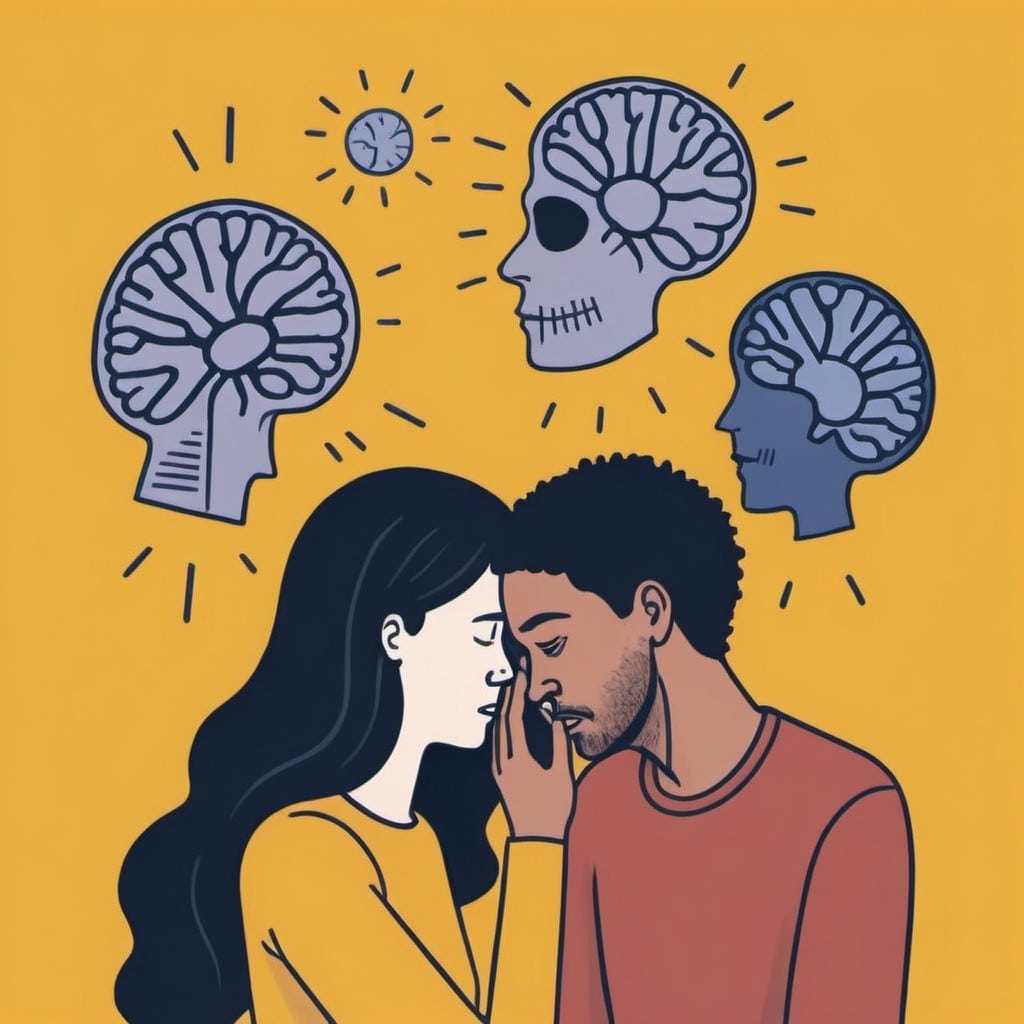The human body has a fascinating ability to express the impacts of stress and emotions, whether positive or negative. But what happens when these impacts translate into backache, abdominal pain, skin disorders or even hair loss? These bodily manifestations often raise complex questions. Let’s explore the links between our emotions, our physiology and our health.
| Contents : Somatization: a bodily expression of stress Research | When emotions weigh on the heart Taming your emotions: a step towards health The art of letting go Fostering emotional resilience A key role in the wellness process |
Somatization: a bodily expression of stress
Psychosomatic disorders are real physical symptoms for which there is no clear medical explanation, and which have a psychic origin. These manifestations are neither imaginary nor simulated. In medicine, it is estimated that around a third of somatic symptoms are medically unexplained, underlining the frequency of these disorders.
Historically grouped under terms such as “hysteria” or “somatization”, these disorders include various expressions:
- Somatization: various physical symptoms with no identified medical cause. For example, back pain without any physical cause.
- Hypochondria: persistent fear of a serious illness.
- Psychogenic pain: pain amplified or maintained by psychological factors.
- Conversion: unexplained neurological symptoms linked to psychological stress or conflict. For example, blindness that has no cerebral explanation.
Contrary to popular belief, somatization is not a mystical language of the body, but rather the direct impact of stress on the organism. For example, stress can trigger digestive disorders via inflammatory reactions, aggravate skin problems such as eczema, or slow healing.
Some researchers explain the link between skin and brain by their common embryonic origin: both develop from the ectoderm. This shared origin, they argue, could enable a form of molecular “communication” between these two structures, influencing the way stress manifests itself in the body.
Research | When emotions weigh on the heart
Chronic stress and prolonged negative emotions increase cardiovascular risk. Research, such as that conducted by the Columbia Heart Health Center, has shown that positive emotions – joy, contentment, optimism – play a protective role.
- People with a high level ofpositive affect reduce their risk of cardiovascular disease by 22% compared to those with an average level.
- These emotions act as a “shock absorber”, enabling a quicker return to calm after short-term stress.
Psychology researcher Barbara Fredrickson illustrated this effect with an experiment in which participants exposed to happy videos returned to a normal heart rate much more quickly than those who had viewed sad content.
Tame your emotions: a step towards health
One key to limiting the toxic impact of stress is to become aware of your negative emotions. It may sound simple, but there’s a difference between feeling an emotion (like anger) and consciously acknowledging it (“I’m angry”).
Tools can help:
- Mindfulness meditation: trains attention to detect emotions as soon as they appear.
- Relaxation techniques: deep breathing and muscle relaxation help reduce tension.
- Pleasurable activities: Listening to music, going out with friends or just laughing.
The art of letting go
Contrary to popular belief, “purging” negative emotions with explosive gestures (such as hitting an object to calm down) can actually increase the intensity of these emotions. It’s more effective to express anger in a measured way, and even to put it into perspective.
Adopting a perspective of humor or detachment helps dissipate negative feelings. By recognizing that emotions, like waves, come and go, we can prevent them from settling permanently in the body.
Fostering emotional resilience
Positive emotions are more than just an attitude: they’re a real bulwark of good health. By encouraging their emergence, whether through social interaction, moments of gratitude or practices such as massage, we protect our bodies from the deleterious effects of stress.
So, by learning to recognize and transform our emotions, we give our bodies a real breath of oxygen. Because, ultimately, psychological well-being and physical health are inseparable.
A key role in the wellness process
Massage therapy, as a bodily practice, offers a unique space for people suffering from psychosomatic disorders. It can help re-establish the link between body and mind, often altered by suffering, and restore confidence in bodily sensations.
By understanding the basics of these disorders and adopting a benevolent, respectful posture, you become an essential player in your clients’ well-being, while respecting the limits of your practice. In this way, each session becomes an opportunity to gently and humanely accompany people in their quest for inner balance.
To remember:
- Psychosomatic disorders are real physical symptoms with no identifiable medical cause, often triggered by stress. E.g.: pain, digestive, skin or neurological disorders. Stress influences the body via inflammatory mechanisms and a common embryological origin between skin and brain.
- Chronic negative emotions increase cardiovascular risk, while positive emotions, such as joy or optimism, act as a protective factor.
- Consciously acknowledging emotions is essential to limiting their physical impact. Effective techniques include mindfulness meditation, relaxation, pleasurable activities and measured (rather than explosive) emotional expression.
- Massage therapy helps re-establish the link between body and mind, often disrupted by stress. It provides a caring space for inner balance and completes a holistic approach to wellness.
Sources :
- Alfvén G, Andersson E. Stress and recurrent abdominal pain. Acta Paediatr. 2023 Nov;112(11):2312-2316. doi: 10.1111/apa.16946. Epub 2023 Aug 18. PMID: 37565357.
- Tison, P. (2023) . 26. Psychosomatic disorders. Aide-Mémoire – Psychologie du vieillissement en 40 notions. ( p. 195 -201 ). Dunod. https://shs.cairn.info/psychologie-du-vieillissement-en-40-notions–9782100854837-page-195?lang=fr.
- Fredrickson, B. L., Mancuso, R. A., Branigan, C., & Tugade, M. M. (2000). The undoing effect of positive emotions. Motivation and Emotion, 24(4), 237-258. https://doi.org/10.1023/a:1010796329158
- Davidson, K. W., Mostofsky, E., & Whang, W. (2010). Don’t worry, be happy: positive affect and reduced 10-year incident coronary heart disease: The Canadian Nova Scotia Health Survey. European Heart Journal, 31(9), 1065-1070. https://doi.org/10.1093/eurheartj/ehp603

